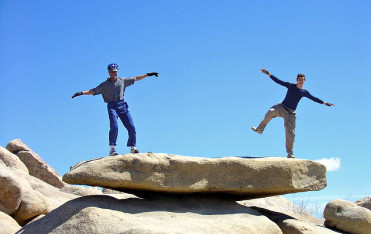I was watching the trailer for the new film “Everest” and something caught my ear. In it, a voice proclaims “Human beings simply aren’t built to function at the crusing altitude of a 747. Our bodies will literally be dying.” Hearing this quote got me thinking again about the question – what do we train for and how does that affect our programs?”
The reason I think about this at all is that my experience with myself, and then as a personal trainer, has been that we often talk about fitness or being fit without ever clarifying what that means. Without a clear understanding we often grasp in the dark at vague ideas, utilizing unnecessary equipment and techniques and missing out on simpler, more beneficial options.
Going back to the movie quote I opened with, the prospect of standing on top of Mount Everest is an interesting jumping off point. Certainly, such a strenuous undertaking requires a great deal of physical fitness. Climbers will train their cardiovascular and muscular systems for the ascent. Along the way, the body will adapt to the changes in oxygen levels. They will also want to be accustomed to tromping through snow, dealing with very cold air, and handling very windy conditions. In short, they certainly need to be ‘fit’ in order to complete the task they have chosen and anyone who observes and recognizes their feat will be impressed. However, it is interesting to consider that this level and type of fitness is hardly necessary for most people, and, given the fact that the entire training is preparationg for a task that might kill you, is not even necessarily healthy.
If you are not entirely sure where I am going with this think about how many fitness programs promise to “train you like a dancer”, “like a gymnast”, or give you a “soccer butt” or “climber’s back”. We even have face masks that are supposed to simulate high alititude conditions (whether or not they do is a topic for another discussion). But all of those things are looking at end performance goals that may not have any relevance to the average person. Unless you are planning to risk your life to scale Mount Everest you probably don’t need to train like it.
The point I am attempting to make is that the mantra should not be to train “like someone” but rather to train for something. For most of us, that means for stronger hearts, better body fat to muscle ratios, and less chronic joint pains. None of that involves performing ballet, playing offensive line, or standing on top of a mountain from which you may just as well never return.


